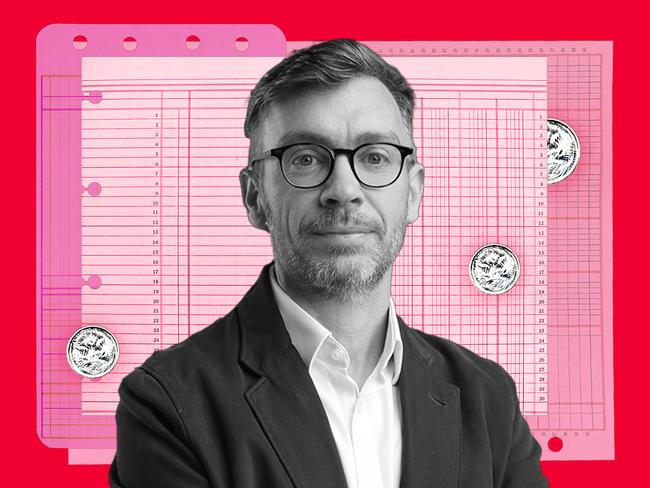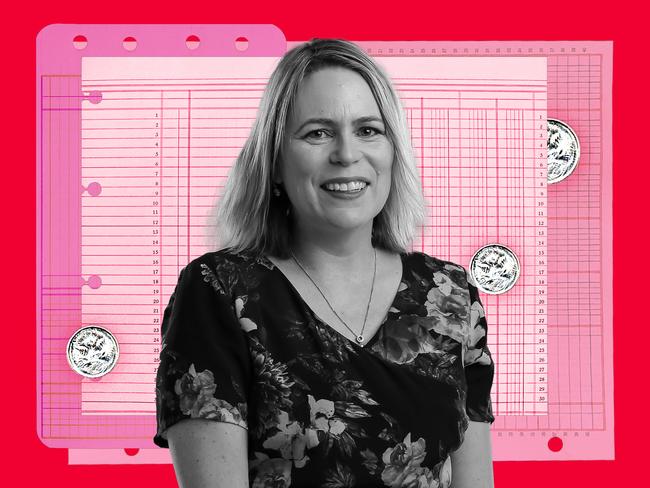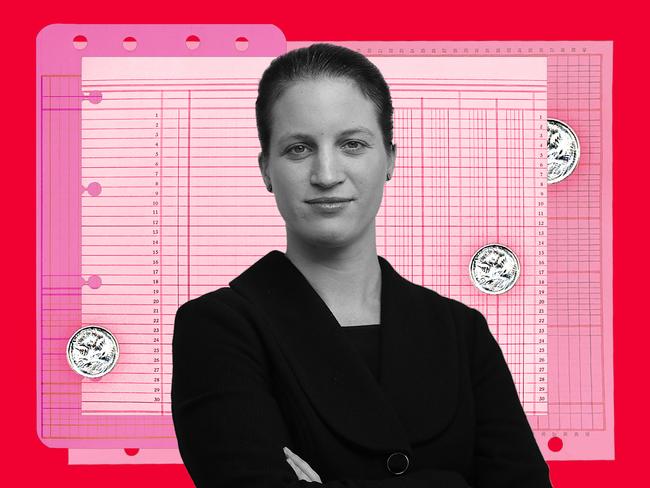Federal budget 2023: From wages to Medicare and defence, our experts give their verdicts

The economy
Patrick Commins: ‘Sounds too good to be true’

The most extraordinary aspect of Tuesday’s budget is not this financial year’s $4.2bn surplus. That is pretty remarkable, but at this stage we are all familiar with the rolling thunder of massive revenue upgrades. The most incredible thing is that in the course of a single night, the $50-60bn hole in the country’s long-term finances has disappeared. October’s budget had the deficit stuck at 2 per cent of GDP in a decade’s time.
Come May, that has dwindled to 0.2 per cent – a virtually balanced budget by 2033-34. It has taken no tough decisions. Just borrowing a lot less as a result of this year’s surplus and much smaller deficits over the coming four years – saving us $83bn in interest costs over a decade.
Then just assume the NDIS will grow at 10.4 per cent a year over the medium term, versus 13.8 per cent in October, throw in some larger projected tax receipts from more workers, and, hey presto, our structural budget hole has filled itself. Sounds too good to be true.
Wages
Ewin Hannan: ‘A remarkable turnaround for pay’

The budget predicts workers will go from enduring record real wage cuts to a return to real wages growth in just 14 months.
Wages are forecast to grow by four per cent next financial year, the fastest rate since 2009. If treasury is right, and voters should be sceptical given its forecasting history, it will be a remarkable turnaround.
Following years of stagnating wages under the Coalition, the horror 7.8 per cent increase in inflation through 2022 overshadowed the fact that the 3.3 per cent growth in wages over the same period was the strongest since 2012.
Six months ago, real wages were expected to begin rising again by June next year. Now treasury says that will start happening at the start of 2024.
If you think you’ve heard this before, you’d be right.
But while the Coalition sat on its hands for nine years, Labor has made a series of policy interventions, including funding for aged care pay rises, explicit support for significant minimum wage increases and bargaining law changes, to deliver on its promise to get wages moving again.
Main points:
● Wages to increase by four per cent in 2023-24, the fastest nominal wages growth since 2009.
● Real wage growth to return by early 2024.
Health
Natasha Robinson: ‘This will make a real difference’

The $3.5bn centrepiece of the health budget — the tripling of the incentive paid to GPs for bulk billing children, pensioners and other healthcare card holders — is smart politics and will make a real difference to ordinary Australians. It falls short of doctors’ demands for a wholesale lift to primary care Medicare rebates, but subsidising those more needy and vulnerable is a better use of the healthcare dollar and will ultimately mean those who really need it will be much more likely to able to access bulk billing. There’s a big sweetener to doctors in the budget in the new Medicare item numbers for longer consultations - a sorely needed and long overdue measure. With almost another billion dollars going to Medicare structural reform, this is a budget that will make \inroads to the long project of addressing the dire state of primary care.
Main points:
●$3.5 b in incentive payments to doctors for bulk billing children and pensioners
● New Medicare item number for 60 minute consultations
● An extra eight Medicare Urgent Care Clinics
● $260m to support those with severe mental illness
The politics
Dennis Shanahan: ‘Jim Chalmers is hoping for the best’

Jim Chalmers has done what he had to do politically and has “assumed” the economy will look after itself.
All of the emphasis, all of the action and all of the spending in the Treasurer’s first full budget has been directed at trying to alleviate the unbearable pressure of cost-of-living on families, especially rising power prices.
All of the hope, all of the best assumptions and all of the economic management has been directed at hoping for the best.
Chalmers had no choice but spend and spend big on his relief package because Labor has promised since before the election a year ago, since the first budget in October and ever since to take the pressure off people “under the pump”.
Defence
Ben Packham: ‘A plodding budget for Defence’

The Defence budget defies the government’s claims that it is urgently transforming the ADF amid unprecedented strategic threats. Defence spending is forecast rise by about the rate of inflation – but no more – hovering just a hair above 2 per cent of GDP for the coming four years. That’s despite the defence strategic review’s clear call to action just a few weeks ago when it warned the ADF is “no longer fit for purpose”. New long-range missile capabilities and lethal drones are still years away. The document also confirms the government will proceed with the purchase of $2.2bn worth of new tanks and combat engineering vehicles that are unlikely to ever leave Australia’s shores. This is a plodding, steady-as-she-goes Defence budget, not one for the times.
● $9bn for nuclear submarine program implementation
● $4.1bn for long-range strike capabilities
● $3.8bn for the ADF’s northern bases
● $400m for ADF personnel retention
Education
Natasha Bita: ‘Treasurer gets a D’

Angry teacher unions will award a dunce mark of D for education. The Treasurer failed to utter the words “schools” or “universities” in his budget speech, refusing to splash cash on education as a pillar of Labor policy. The reformist Education Minister Jason Clare has hit pause on major new spending while he negotiates a new National Schools Reform Agreement with the states and territories, finalises his Universities Accord, and reviews teacher workforce and training. But students struggling with school work and tired-out teachers can’t afford the wait. Top marks will go to Brendan O’Connor’s pledge of $3.7 billion over five years for more free TAFE courses, while 1.2 million families will pocket higher subsidies for childcare.
Main points
● $3.7b for free TAFE courses over five years.
● Funding to rise 5.7% for government schools, 4.8% for private schools next year.
● $35m to attract and retain teachers.
● $72m to upskill childcare staff.
● Higher childcare subsidies to save 1.2 million families an average of $1700 a year from July
Social policy
Stephen Lunn: ‘Labor makes clear it wants aged care in our homes’

The Albanese government has made it clear where it believes the future of aged care lies — in our own homes.
In cutting $2.2bn in funding for nursing homes over the next three years as part of its broader budget repair program, the government is heralding a shift to deliver more services in the home.
It says this is the preference of most older Australians, which is no doubt true. If aged care can be delivered in the home that provides the right support to the increasingly frail, that is the way to go.
Occupancy rates in nursing homes have always been high. Providers have tended to trust the demographic of an ageing population, people living longer with increasing care and support needs. But recent trends have seen those occupancy rates fall, down to just over 90 per cent.
The government has pitched the change as a temporary measure, but it would be no surprise for the shift in focus to be a longer term prospect, as providing aged care in home is a less costly proposition.

The budget notes significant cost rises in the sector overall, from $32.7bn this financial year up to $40bn in 2026-27, numbers that have been bolstered by the 15 per cent pay rise awarded to 250,000 residential aged care workers, $11.3bn over four years. It is the government’s fourth biggest spending program, bigger than Medicare.
Around 1.5 million Australians accessed aged care services this year, and an ageing population means this is going to grow.
Shifting to a focus on in-home care is a sensible long term approach. But the government still has short term problem with the financial viability of nursing home operators, two-thirds of which are currently operating at a loss.
It is time to seriously consider how richer older Australians can contribute more to the cost of some of the components of their care, including the non-personal care components such as cleaning and meals. The government has started looking at this as an option, but it is not one for this budget.
Main points:
● $2.2bn cut to nursing home funding over three years
● Greater focus on in-home care support
● Postponing new Support at Home program until mid-2025
Business
Eric Johnston: ‘Inflation puts a brake on big spending’

With much of the election spending now out of the way Chalmers sensibly resists the temptation to use the a windfall revenue gain from higher commodity prices and corporate taxes for more nation building projects. The budget is framed around inflation running at 30-year highs and there is a bigger risk that additional spending could cause inflation to heat up, forcing the Reserve Bank to push rates up higher and potentially crash the economy. So while there is little direct boost for business it is what the budget doesn’t have, including a spending another infrastructure spending spree which will be a relief to business. At the same time the tax measures are limited to a “softer” $2.6bn shake-up to the Petroleum Resources Rent Tax. There were lingering fears among some bosses of a return to a super profits tax or tweaks to the bank levy to help pay down debt. None of that is here. Chalmers too, has issued a cautious response to the US’ Inflation Reduction Act, the mega-green energy package that is sucking in new investment from around the world. Australia’s response comes in the form of a $2bn kick start to the green hydrogen sector which should keep Fortescue boss Andrew Forrest happy. The nation’s key financial regulators the ACCC, APRA and ASIC get a top up in funding but more to cover inflation than a wave of crackdowns.
Main points:
● Inflation forecast to pull back sharply to 3.25 per cent by mid-next year
● A $2bn package to help develop Australia’s green hydrogen sector
Cost of living
Rosie Lewis: ‘Labor reckons its managed to get the balance right’

The government could not deliver the first budget surplus in 15 years without helping Aussie households but has been incredibly targeted in its relief. Why? Because the cost-of-living crisis is being fuelled by high inflation. The government reckons its managed to get the balance right in offering $14.6bn in support to mostly low-income households and small businesses across six big-ticket items that Jim Chalmers insists will actually reduce inflation by ¾ of a percentage point next financial year.
Main points:
●The headline cost-of-living figures that were revealed on budget night included $3.5bn in bulk-billing incentives to deliver free GP consults for nearly 12 million patients, $4.9bn to increase JobSeeker and other welfare payments by at least $40 per fortnight for around $1.1 million recipients, and $2.7bn to lift Commonwealth rent assistance for 1.1 million households.
Housing
Max Maddison: ‘The budget will do little to ease the housing crisis’

Australia is grappling with a housing crisis. But the budget will do little to ease the pain.
The Albanese government should be commended for increasing the rental assistance rate, but in light of the 15 per cent rise in rental prices in most capital cities over 2022, for the nation’s most vulnerable, the $15.50 weekly lift won’t go far.
In reality, as with almost all demand solutions, as the market factors in the 1.1m renters having more cash to play with, the rise will almost certainly be swallowed up by a corollary rise in rental prices.
With the housing supply gap widening, increasing supply is the main game, but there’s little in this budget to build upon Labor’s National Housing Accord. The measures addressing supply are on the margins.
Net migration is set to soar by 1.5m over the next five years, and the government can’t rest on any yet-to-be-realised announcements.
The housing crisis is not going to stand still. Consequently, neither can the solution.
More Coverage







Labor has delivered its 2023 federal budget, now The Australian’s experts break it down — and they’re pulling no punches.